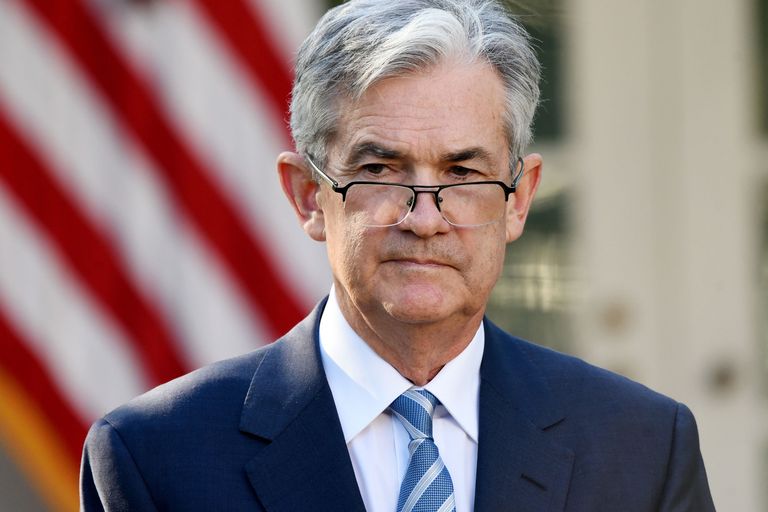The Fed may have booked a new-month rally on Wall Street, but keep caution on the inflation trajectory
Wall Street had a strong month in January, with the S&P 500 up 7.9%, posting the best month since October 2015. The growth stocks outperformed as the US inflation cooled for a third consecutive month, sending the tech-heavy index, Nasdaq, up 10% monthly. The ongoing tech earnings optimism also continued to fuel the rebounding euphoria. The good news is that the Fed further slowed down its rate hike pace to 25 basis points and indicated to cap the terminal interest rate under 5%, which is seen as a slightly dovish shift in its monetary policy. In February, the US CPI data will be a focus to provide clues on the inflation trajectory. Shall a further cool in the consumer price, the Fed may further scale back rate hikes and possibly pause the cycle after March, which could buoy the risk assets further before its next meeting in March.
Australian stocks may remain robust, with the RBA rate decision and upcoming earnings in focus
The Australian markets remained robust in January, with the ASX 200 up 6%, buoyed by the strong performance of the miner stocks amid record output numbers and positive guidance. China’s reopening has played a key role in boosting the Australian markets by improving the resource demand outlooks, typically in iron ore and copper, where the Pilbara Miners jumped 25%, Rio Tino rose 8.5%, and BHP up 7.4% in the first month of the year. However, the country’s economic outlook gets gloomier amid sticky inflation, downbeat in its retail sales and loosened labour markets. In February, the RBA’s rate decision will be in the spotlight as the Reserve Bank is most likely to stay dovish as the economic growth becomes more of a risk rather than the hefty inflation. Plus, the upcoming major banks’ and miners’ half-year results may offer further strength to the Australian equity markets.
The RBNZ policy meeting may further boost the New Zealand dollar
The surge in the New Zealand dollar lost some steam in January as markets seem to be suspicious about whether the Reserve Bank of New Zealand (RBNZ) will remain hawkish in its rate hikes after the country’s unemployment rate is seen to rise to 3.4% from 3.3%, which is the highest since the third quarter in 2022. While the New Zealand business confidence slightly bounced to -52 from a record low of -70.2 in January, the inflation data for the fourth quarter stayed at a 30-year high of 7.2%. Unlike the RBA, the RBNZ will most likely concentrate on inflation rather than the economic outlook. It vows to tame inflation even if the aggressive monetary policy may lead to an economic downturn. Hence, the Kiwi dollar could be further boosted by the RBNZ’s hawkish stance if this happens in its policy meeting this month.
REITs may shine and lead gains in the SGX
Market-wise, the Straits Times Index is up more than 3.5% in January. This is mainly due to falling Consumer Price Index levels in the US and China’s surprising U-turn in its pandemic management. This bullish run puts the STI on track to exceed its 2023 highs. Core inflation came in at 5.1% and has been constant for the third month running. The slower price increases for telecommunication equipment, electricity and gas offset the heightened inflation for food and services. Also,headline inflation fell to 6.5% on the heels of slower private transport inflation as petrol prices rose gradually.
In their outlook, MAS has attributed Singapore’s imported inflation to the accumulated costs that pass through global value chains. While demand in major economies and supply chain frictions have eased, wage pressures remain strong while energy and food commodities prices stay elevated. Against such challenges, MAS has projects core inflation to keep at this level for the first half of the year before falling throughout the year as the domestic labour market eases and global inflation moderates. For 2023, MAS expects headline and core inflation to average 5.5%-6.5% and 3.5%-4%, respectively.
Stocks listed on SGX enjoyed decent gains in January as investors turned their focus towards Real Estate Investment Trusts (REITs) like Mapletree Industrial Trust and CaplandAscendas REIT. As central banks become more open towards quantitative easing after repeated rate hikes, investors are hoping this optimism would flow towards better dividend yields for their preferred REITs. As inflationary pressures continue to impact prices and valuations, all eyes are on the upcoming Budget 2023 which is set to be delivered in Parliament on 14th February.
Gold may head off the 2,000-mark
Gold formed its bottom-up pattern in November, gaining for the third consecutive month in January up about 21% from the November low of just above $1,600 per ounce to above $1,960 in early February. With a further decline in the US dollar and the US bond yields, the rally on the precious metal is not seen to stop in February. We can almost see gold reaching the 2,000 mark again, which is the highest seen in April 2022, and July 2020. Will gold hit the all-time high of above 2070 again in February? It is likely with the strong momentum remaining. And this might be all about the Feb policy and the movements in the USD.
Oil markets are under pressure
Crude prices fell in January amid a weakened demand outlook as US inventories are seen an excessive build, while OPEC+ has no plans to cut output. Despite China’s reopening, oil traders are not reacting to it as Russia’s export seems unaffected by the EU and allies’ sanctions. From a tactical perspective, oil prices were moving in a positive correlation with inflation due to the war-intensified undersupply in early 2022. With inflation coming down globally, oil may not be in favour of hedge funds. But there are still major bullish factors going forward, we need to keep eye on China’s upcoming economic data, such as February manufacturing PMIs and January trade balance.
Have Chinese stocks been overbought?
The Chinese stock markets soared since October amid China’s U-turn in its Covid policy, with the Hang Seng Index surging 12% in January and nearly 50% from its October low. However, the three-month sharp rebound in the Chinese shares may face a near-term pullback risk as the equity markets may have already priced in the reopening optimism. Profit-taking and Wall Street’s rally may shift investment funds from Asian markets to the US, causing a technical retreat in Chinese shares. In the new month, the focus will be on China’s economic data, such as new Yuan loans, manufacturing and service PMIs, and the PBOC policy path. It is expected the Chinese government and central bank will continue the stimulus measures to support its economy.
Disclaimer: CMC Markets Singapore may provide or make available research analysis or reports prepared or issued by entities within the CMC Markets group of companies, located and regulated under the laws in a foreign jurisdictions, in accordance with regulation 32C of the Financial Advisers Regulations. Where such information is issued or promulgated to a person who is not an accredited investor, expert investor or institutional investor, CMC Markets Singapore accepts legal responsibility for the contents of the analysis or report, to the extent required by law. Recipients of such information who are resident in Singapore may contact CMC Markets Singapore on 1800 559 6000 for any matters arising from or in connection with the information.








